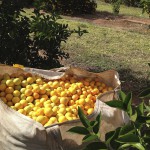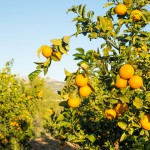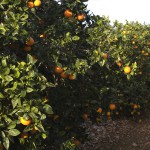It’s always important to look at the overall global supply situation of any one product when trying to understand what’s happening in your local markets. Depending on the quality, quantity and origin of the product you buy, then what you pay and the challenges you face could be very different. Sometimes these supply dynamics are not just linked to the product and the origin of what you buy but are impacted by supply conditions in other parts of the world.
Just before launching our full Spring Market Report we’re focusing on orange from Brazil, Italy, Spain, South Africa and USA to give you a general oversight of how we see today’s situation.
Orange Oil CP Citrus sinensis Harvest: July - December
The orange story was certainly the talking point of 2016 with prices soaring to record levels. Recovery isn’t an overnight process and we all know that for the most part of 2017 times will still be difficult but it appears the tide is turning and there is some light at the end of this dark tunnel.
Not that anyone needs it but let’s remind ourselves of how we ended 2016:
- The lowest crop in Brazil for 10 years!
- A further 17% reduction in production of fresh fruits in the 2016/17 season
- 2nd worst brix yield in history
- Oil prices average 30% higher in 2016 from 2015 (FOB Santos Jan-Oct)
- Oil prices in December 2016 40% higher that December 2015 with the gap widening month on month
This maybe a case of it simply can’t get any worse and maybe that’s correct. Are price levels of USD 12.00 /kilo and above sustainable for such a commodity? Do such prices do irrevocable damage to the industry’s credibility and the long-term use of this oil? Perhaps, but none of these questions were factors in what happened last year, just resulting questions you had to ask yourself after such an event.
There is no doubt we’re still in for a rough period as prices in January 2017 peaked at record levels and local juice stocks by June 2017 (end of the season) are expected to be at an all time low. Juice is always a good indicator for our oil sector as without juice production there’s no oil. Let’s bear that in mind as we read on.
And so we move on and look ahead to this year’s Brazilian orange production and the numbers appear to have suddenly improved, largely led by one company’s dramatic turnaround. However, these benefits will not be felt in the oil industry until much later in the year as today we are starved of supply and still have a period to wait until the next harvest.
According to USDA information, it expects Brazil’s fresh orange production to increase 27% over the course of the next season (starting July 2017 – ending June 2018). “Steady blossoming and adequate weather patterns have sustained the potential recovery of citrus yields this year” the USDA states. However, it does go on to say that this is an early estimate and a lot can happen between now and then, as we know.
If we focus on the juice sector, there are talks of doubling stocks in Brazil, which will increase the global position by 15% as juice demand starts to recover a little. If we are expecting stocks of juice to double in Brazil this should mean availability of materials to produce more oil, but what about prices? Does more supply mean lower prices.
In January 2017 spot orange prices in Brazil reached record highs and we know most of the supply pipelines around the world are running dry and between now and the new season it can only get worse, not better. Once the new season is in full flow it will take time to get to a position where demand is again satisfied so it’s likely to be towards the end of Q3, early Q4 before we see any price benefits from what we hope is an improved season ahead.
CItrusBR will release its data in May on the new season, which will be a good indicator as to what to expect for the rest of the year. For now let’s take some positives from what we hear but remain realistic in that prices always fall much slower that they go up (just like your gas/fuel at the gas/petrol station!)!
This maybe a case of it simply can’t get any worse and maybe that’s correct. Are price levels of USD 12.00 /kilo and above sustainable for such a commodity? Do such prices do irrevocable damage to the industry’s credibility and the long-term use of this oil? Perhaps, but none of these questions were factors in what happened last year, just resulting questions you had to ask yourself after such an event.
 Ultra International B.V.
Ultra International B.V.





